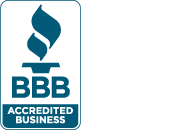Last updated on: May 20, 2025
For every nonprofit, understanding and fulfilling tax obligations is critical to legal compliance. Form 990, the IRS annual report that nonprofits must file, is central to these obligations. This blog provides a detailed overview of Form 990, including its various versions, filing deadlines, and common pitfalls to avoid.
What is Form 990?
Form 990 is an annual tax form that nonprofits in the United States must file with the Internal Revenue Service (IRS). It provides the IRS and the public with financial information about a nonprofit organization’s mission, programs, and finances. The IRS uses the form to assess the nonprofit’s compliance with tax obligations and ensure that it is operating in line with its tax-exempt purpose.
Different Versions of Form 990
Depending on the size and gross receipts of your nonprofit, you will file one of the following forms:
- Form 990-N (e-Postcard): For nonprofits with gross receipts of $50,000 or less. It is the simplest version and can be filed electronically.
- Form 990-EZ: For nonprofits with gross receipts less than $200,000 and total assets less than $500,000. It’s a more detailed form than the 990-N but less complex than the full Form 990.
- Form 990: For nonprofits with gross receipts over $200,000 or total assets over $500,000. This is the most detailed version of the form, requiring extensive information about the nonprofit’s finances, governance, and operations.
- Form 990-PF: Used specifically by private foundations, regardless of financial status.
Filing Deadlines
The deadline for filing Form 990 is the 15th day of the 5th month after your organization’s fiscal year ends. For example, if your fiscal year ends on December 31, your Form 990 would be due on May 15 of the following year. Filing on time is important to avoid penalties and maintain your nonprofit’s tax-exempt status.
Common Mistakes to Avoid
When preparing Form 990, nonprofits often encounter several common pitfalls:
- Incomplete or Inaccurate Information: Ensure that all information is accurate and that the form is fully completed. Inaccuracies can raise red flags with the IRS.
- Failing to Explain Changes: If significant changes in your nonprofit’s activities, finances, or governance exist, these should be clearly explained in the form.
- Neglecting Required Schedules: Additional schedules may be required Depending on your activities and financial situation. Failing to include these can result in an incomplete filing.
- Not Filing Electronically: Smaller nonprofits can file paper forms, but most must file electronically. Electronic filing is more efficient and reduces the risk of errors.
Form 990 is more than just a tax requirement; it’s a public document that reflects your nonprofit’s integrity and management. Accurate and timely filing is crucial for maintaining your tax-exempt status and demonstrating transparency to your supporters and the public.
If you find navigating Form 990 challenging, seeking assistance from a professional experienced in nonprofit tax matters, such as the experts at BryteBridge Nonprofit Solutions, may be beneficial. Our team of tax filing professionals can provide you with a worry-free experience. Let us know how we can help you today. We also are highly rated on verified reviews!



